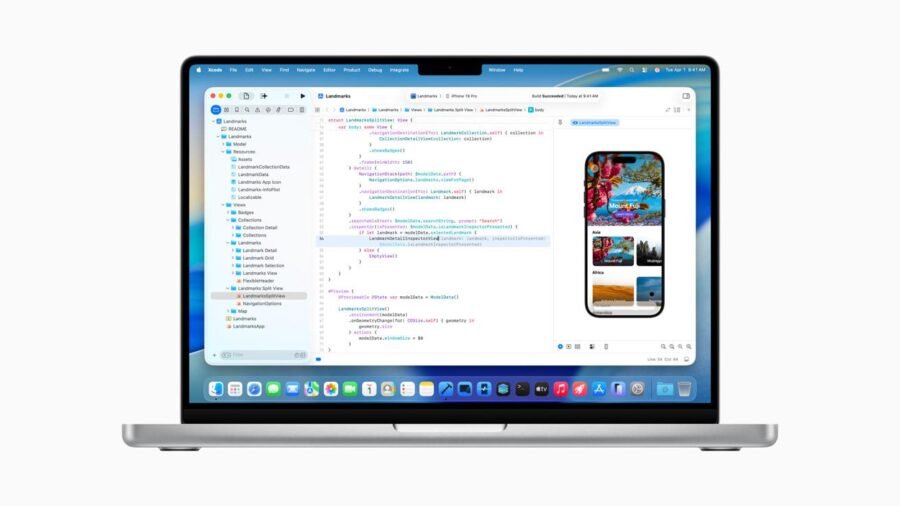Click here to buy secure, speedy, and reliable Web hosting, Cloud hosting, Agency hosting, VPS hosting, Website builder, Business email, Reach email marketing at 20% discount from our Gold Partner Hostinger You can also read 12 Top Reasons to Choose Hostinger’s Best Web Hosting
Developers are drowning in context-switching: hunting docs, reproducing bugs, and writing tests while deadlines loom — and many AI helpers meant to speed coding instead give mixed results or raise privacy worries. That frustration is urgent: teams want faster iteration and control over their code and data. Xcode 26 ChatGPT alternatives offer a concrete response — not a single closed assistant, but a flexible model: built-in ChatGPT support, the option to plug in other LLMs via API keys, and on-device Foundation Models for local inference — giving teams choice, privacy, and a path to integrate the AI they trust.
GPT-5’s launch will likely trigger demand spikes that OpenAI cannot immediately satisfy
Why this matters now
Apple’s Xcode 26 is not just another IDE update — it’s a statement about how platform vendors will treat AI assistants in developer tools. Instead of tethering developers to one vendor or one cloud, Apple is shipping intelligence features that let you choose the model, where it runs, and how data flows: ChatGPT is included by default, other providers via API keys are supported, and Apple’s new Foundation Models framework makes on-device inference practical. That combination changes the equation for teams balancing productivity, cost, and privacy.
What Xcode 26 brings
Key features introduced or highlighted by Apple:
Built-in ChatGPT support inside Xcode’s Coding Tools (chat, code generation, inline prompts).
Third-party model access — developers can supply API keys from other providers to run external LLMs in Xcode.
On-device Foundation Models via Apple’s Foundation Models framework — developer access to local generative capabilities, guided generation, and tool calling.
Coding Tools: inline suggestions, generate previews/playgrounds, test scaffolding, and targeted fixes within the editor. (Documented in Xcode release notes and WWDC sessions.)

A closer look at the “alternatives” claim
When people say “ChatGPT alternatives,” they mean two different things:
Different remote/model providers — OpenAI’s ChatGPT, Anthropic’s Claude, Cohere, etc., accessible through API keys (cloud). Apple explicitly allows connecting third-party providers through API keys in Xcode, so you’re not locked to Apple or OpenAI for model choice.
Local/on-device models — models that run on Apple silicon using the Foundation Models framework. These models trade raw scale for lower latency, better privacy, and zero per-request cloud costs. Apple’s docs and announcements stress offline availability and simple Swift APIs for guided generation and tool calling.
Practical takeaway: Apple’s approach is multi-hosted — cloud (ChatGPT & others) and on-device — which is why “alternatives” is a single feature of a broader choice architecture rather than a statement that one replacement will beat another.
Mastering ChatGPT Deep Research Mode: A Step-by-Step Guide for In-Depth AI-Powered Research
Why Apple’s multi-option design is strategically smart
For engineering leads: You can pilot an LLM in the cloud, then shift sensitive flows to on-device models without ripping out the IDE integration — Xcode’s platform-level support smooths that transition.
For security/privacy teams: On-device inference reduces PII leakage and regulatory exposure; Apple positions Foundation Models as “privacy-centric” tools that can run without network calls. That matters for regulated verticals (healthcare, finance).
For product managers & indie devs: Cost control matters. Cloud LLM calls can be expensive. The option to run local models on M-series chips shifts cost from variable API spend to fixed device capability — attractive for consumer apps with high inference rates.
For model vendors: Being one of the “pluggable” providers is now a product win — integration into Xcode’s Coding Tools is a fast path to developer adoption. Expect model providers to ship Xcode templates, SDKs, and pricing tiers that target IDE usage.
Gemini Temporary Chats: How Google’s “incognito” for AI Works
Mini case study: Day One
Apple highlights Automattic’s Day One journaling app as an early user of the Foundation Models framework to deliver privacy-first prompts and writing help. This shows the pragmatic use case: feature-level intelligence (writing prompts, summarization) that never leaves the device, preserving user trust while adding value. It also signals how consumer apps can use Apple’s model without complex ML ops.
OpenAI Unveils ChatGPT AI Agent that Works for You to Automate Complex Tasks
Developer workflows that change
Scenario 1 — Bug triage: Ask Xcode’s assistant to summarize a failing test, then auto-generate a unit test skeleton. Use ChatGPT for exploratory fixes, then lock to local models for code that touches sensitive data.
Scenario 2 — API migrations: Use Coding Tools to generate migration snippets across Swift versions, review diffs inline, and run local model-backed tests.
Scenario 3 — Documentation and PRs: Generate first-pass docs and PR descriptions with a cloud model, then sanitize and finalize locally before submission.
Each scenario benefits because Xcode centralizes the interface and lets you pick the model that fits the risk/cost profile of the task.
Is ChatGPT an AI Agent? Understanding Its Capabilities and Use Cases
Risks, limits, and what Apple leaves to you
Quality gap: On-device models are improving but typically lag the largest cloud models in raw capabilities. Apple frames them as practical for many tasks, not universally superior.
Trust and verification: Generated code can introduce subtle bugs; Apple’s Coding Tools aim to improve productivity, but human review and testing remain essential.
Ecosystem friction: Teams using custom enterprise models or private model hosts will need secure key handling and policy controls; Apple’s API-key approach helps but isn’t an enterprise governance layer by itself.
What Is Natural Language Processing? A Complete Guide to NLP
How to evaluate choosing a model in Xcode 26
Data sensitivity — prefer on-device for private data.
Cost model — high-volume inference → on-device; bursty tasks → cloud.
Latency needs — local wins for low latency.
Accuracy requirement — cloud models often lead on complex reasoning; validate with tests.
Governance & auditability — ensure API keys, logging, and review processes meet your compliance needs.
Key Takeaways
Xcode 26 lets developers choose where and how AI runs: built-in ChatGPT, third-party API keys, or local Foundation Models.
Choice equals control — teams can balance productivity, cost, and privacy without re-architecting toolchains.
On-device models enable offline, privacy-centric features for consumer apps and enterprise workflows.
Practical adoption will be hybrid: cloud for heavy lifting, local for sensitive or high-volume tasks.
Human oversight is still required — AI accelerates steps but doesn’t replace tests, reviews, and governance.
FAQs (People Also Ask)
Q: Does Xcode 26 lock me into ChatGPT?
A: No. Apple ships ChatGPT integration but explicitly supports API keys from other providers and running local models on Apple silicon, so you’re not locked to a single vendor.
Q: Are Foundation Models free to use in apps?
A: Apple describes Foundation Models as available for on-device inference (no per-request charges), but check the developer terms and any licensing conditions for model distribution.
Q: Will on-device models match cloud model accuracy?
A: Not always. On-device models prioritize privacy and latency; for some complex reasoning tasks the largest cloud hosts may still outperform. Evaluate on your target tasks.
Q: How do I secure API keys for third-party LLMs in Xcode?
A: Treat them like other secrets: use secure keychains, server-side token exchange if needed, and limit scopes/permissions. Apple’s docs discuss API integration patterns; also include your own enterprise secrets policy.
GPT-5 in ChatGPT: What the Slow Rollout Means for Plus, Pro, Team
Conclusion
Xcode 26’s “ChatGPT alternatives” headline masks a more important shift: Apple has turned the IDE into a choice layer for developer intelligence. That choice — pick a cloud model, plug in a third-party API, or run inference on device — is the kind of pragmatic flexibility teams need today. If you manage dev teams, start small: pilot cloud-assisted flows for non-sensitive tasks, measure productivity gains, and then evaluate moving sensitive or high-volume work to on-device Foundation Models. For product teams, test whether local inference unlocks new user experiences that were previously too costly or too risky to deploy. Want to experiment? Install Xcode 26 beta, try the Coding Tools on a simple module, and compare the same task with a cloud model vs a local Foundation Model to chart the tradeoffs.
Try Xcode 26 with a small, non-critical feature — instrument tests and measure time-to-first-use, error rate, and cost per inference. Then iterate your policy: which tasks stay cloud, which go local.
Sources
Apple Newsroom — “Apple supercharges its tools and technologies for developers.” Apple
Xcode 26 Release Notes / Apple Developer Documentation. Apple Developer
Now loading...






